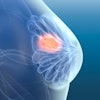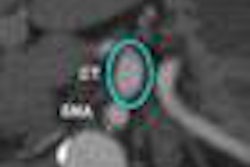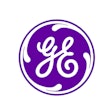In 2007, University of Pittsburgh radiologists decided that using residents for overnight coverage of emergency department (ED) CT scans was a medical anachronism. Instead, they began offering after-hours subspecialty coverage themselves, and reported on their experience in the September issue of the American Journal of Roentgenology.
The value of the traditional after-hours staffing model -- in which an on-call resident performs the first image interpretation and an attending reviews it the next day -- has been increasingly questioned, according to lead author Dr. Mitchell Tublin and colleagues. Some small academic or community practices have chosen to use teleradiology firms, but they have run into the same challenge of delayed review (AJR, September 2012, Vol. 199:3, pp. 623-626).
"The training paradigm under which residents learn by trial and error is disappearing," Tublin told AuntMinnie.com. "And not just for radiology, but for every specialty. There's just no tolerance for resident errors, no matter how rare they are."
In 2008, the University of Pittsburgh Medical Center established a new practice model across both academic and community EDs, in which attending physicians provided overnight subspecialty coverage for neuroradiology and abdominal imaging. Rotating shifts of neuroradiologists and abdominal imagers provided "real-time" final reports for emergency department CT studies between 5 p.m. and 7 a.m. They targeted a turnaround time of 30 minutes or less after study completion, according to Tublin's group.
Before the program was instituted, preliminary interpretations of CT studies performed at four academic emergency departments were provided by radiology residents, while review interpretations were provided to five community emergency departments by either a senior resident or a contracted teleradiology service.
Tublin and colleagues compared total CT volume, emergency department visits, and CT "intensity" (i.e., CT volume divided by emergency department visits) within academic and community hospitals 12 months before and after overnight coverage was established. The team also compared on-call (5 p.m. to 7 a.m.) and daytime CT intensity in academic and community emergency departments during these time periods.
How did the University of Pittsburgh attract radiologists to perform the overnight service? By creating a competitive compensation plan, equivalent to 2008 for-profit distance imaging interpretation rates, for the overnight radiology team, the authors wrote.
"We augmented this with stipends given to the neuroradiology and abdominal imaging divisions for late evening coverage," the group wrote. "The financial burden imposed by the restructuring was initially partially subsidized by the health system."
During the two intervals (before and after overnight coverage was established), the study showed the following:
- Total academic ED CT volume increased 8% (93,629 versus 86,401 examinations).
- Total community ED CT volume increased 9% (67,776 versus 61,790 examinations).
- Academic ED visits increased 7% (164,428 versus 152,411 visits).
- Community ED visits decreased 3% (149,659 versus 153,646 visits).
- Academic ED CT intensity remained constant at 0.57 CT examinations/ED visit.
- Community ED CT intensity increased 12.5%, from 0.40 to 0.45 CT examinations/ED visit.
- Both daytime and on-call academic ED volume increased 7%.
- Daytime community ED CT volume did not change, but on-call CT volume increased 16%.
The researchers also found that length of stay (triage to admission) decreased from 264 minutes to 244 minutes within academic emergency departments and from 293 minutes to 279 minutes within community emergency departments. Return emergency department visits for repeat imaging and next-day changes in care due to interpretative changes were eliminated.
Going into the study, the group's concern was that contemporaneous attending interpretations would increase emergency department CT use throughout the center, both in its academic core and its community emergency departments. However, this did not play out in the academic venue: The increase in CT volume matched the change in emergency department visits. On the other hand, within community emergency departments, CT use did increase -- but it remained below the level of the academic venues.
Why? Perhaps community emergency department physicians more aggressively used subspecialty CT interpretations to mirror the use in academic sites and to help guide care in settings in which access to in-house clinical consultants may have been limited, Tublin and colleagues wrote.
"It's common to think that once more service is provided, the floodgates open up and people start overutilizing," Tublin told AuntMinnie.com. "Although our study did not assess imaging or global care costs, we suspect that the uptick we found in utilization in our community EDs is an overall net positive -- it's providing the best possible care, on time. Increased utilization costs are likely more than balanced by decreases in ED length of stay, ancillary tests, reimaging, and hospital admissions."




















